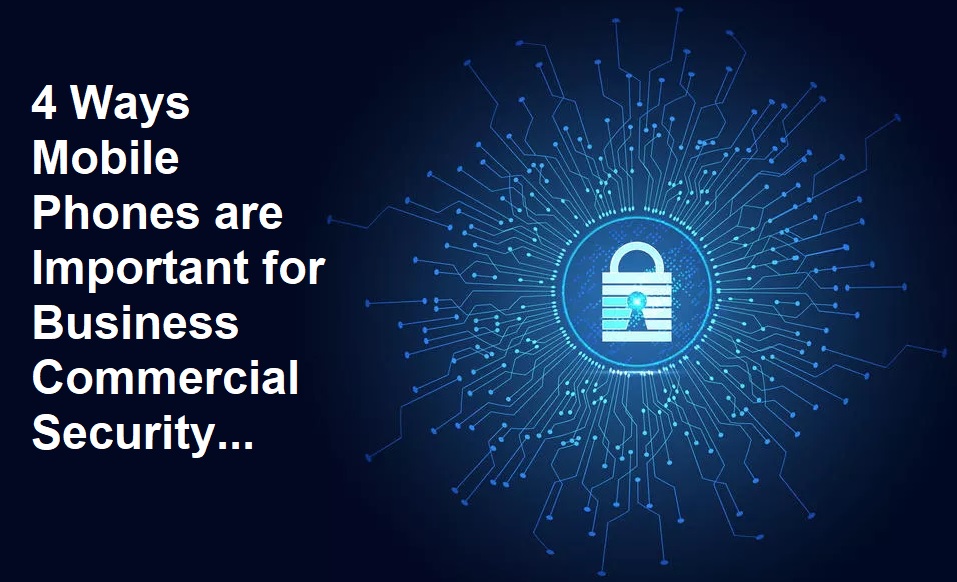A survey by HID revealed that 54% of businesses are considering moving towards mobile-first security technologies in the next three years, and many already have.
Why are mobile phones becoming so integral to commercial security?
Keep reading to learn why mobile phones will be the center of managing and accessing commercial security. Mobile phones allow commercial businesses to keep up with the changing workplace - read on to find out how.
4 Ways Mobile Phones are Important for Business Commercial Security
1. Ability To Remotely Access Security Data
When you invest in a cloud-based and mobile-first security solution, you gain the ability to view security data from anywhere using a mobile application or cloud-based control center. Since the beginning of the pandemic, commercial businesses have been adopting hybrid and remote work models that require them to perform business operations from an off-site location.
To implement remote working successfully, businesses implemented digital technology that allowed them to collaborate on projects and review real-time data remotely. Security experts have provided mobile security tools that enable them to keep up with the changing demands of commercial security.
Instead of needing to be on-site to access security data and operate security features, commercial businesses can enable their system administrators and security staff to manage security from any location. Of course, this information should only be accessible to authorized personnel, so data privacy becomes an additional consideration.
2. Real-Time Security Notifications
Mobile phones ensure that security teams are aware of security threats at all times. Security professionals have many responsibilities that require them to travel to different on-site locations. However, this means they cannot consistently monitor security cameras, access logs, and other security data to spot potential threats and respond.
Commercial security experts can integrate AI and analytics with security tools to monitor security data and spot anomalies to solve this dilemma. If an anomaly is detected, the system will notify your security staff via their mobile device - no matter where they are.
In addition to providing your staff with real-time security notifications, you can pair mobile-first security technology with AI to create automated workflows for your security team. Your security team can establish response protocols for every incident or threat scenario. If they enter these response protocols into automated workflows, they can provide more efficiency in the threat response process.
When AI and analytics detect a threat, the system automatically sends alert notifications to your security team and assigns an incident response workflow to a team member. Manual workflow assignation would be a lengthy process inhibiting your response times, whereas automating the process allows you to provide air-tight threat responses.
3. Identity Verification And MFA
One of the critical vulnerabilities you must address in any sufficient security strategy is the potential for a user to steal credentials and use them to enter your building without authorization.
Mobile-first security solutions provide integration potential, allowing you to implement identity verification and MFA at your building’s entrance. MFA (multi-factor authentication) requires the user to provide more than one credential to enter the building. This could be mobile access credentials, facial recognition, fingerprint, or any other combination of authentication methods.
A smart intercom reader is a mobile-first technology that rolls both access control and high-definition video into a single device. This tool provides access logs and video security feed on a single user-friendly interface, allowing system administrators and security staff to verify the identity of users without correlating time stamps from two disparate platforms.
Since smart intercom readers are a mobile-first technology, they enable security staff to view information for identity verification from anywhere to confirm user identity and prevent unauthorized access.
4. Convenient And Contactless Entry
Mobile access control is an increasingly popular choice in the commercial security industry. This is because of the convenient and contactless entry enabled by mobile security. With mobile access control, the user can enter touchless by simply waving their hand in front of the access control reader. The reader will begin communicating with the user’s mobile device to permit entry when the reader detects the motion. The reader uses three communication modes (WiFi, Bluetooth, and cellular) to ensure no failure and allow access on the first attempt.
By enabling contactless entry, a mobile-first access control solution provides more hygiene for the user - they do not need to touch buttons, keypads, or any other surface that could be a hub for germs. Users can also enter without standing outside the building’s entrance and rooting through their pockets to find their mobile devices. Instead, they can enter quickly, even if they have their hands full carrying a latte or stack of paperwork.
Summary:
Your security team can stay informed about security threats with mobile security, which allows them to receive alerts and view security information from anywhere. They can verify the identity of users from anywhere using a mobile application. Mobile security technologies are revolutionizing the security sphere to increase the convenience and sophistication of everyday commercial building use.








COMMENTS